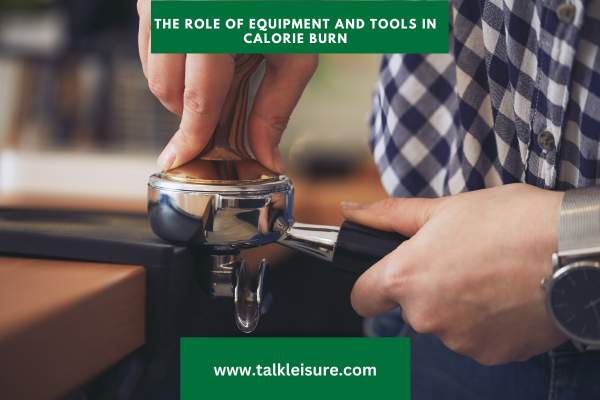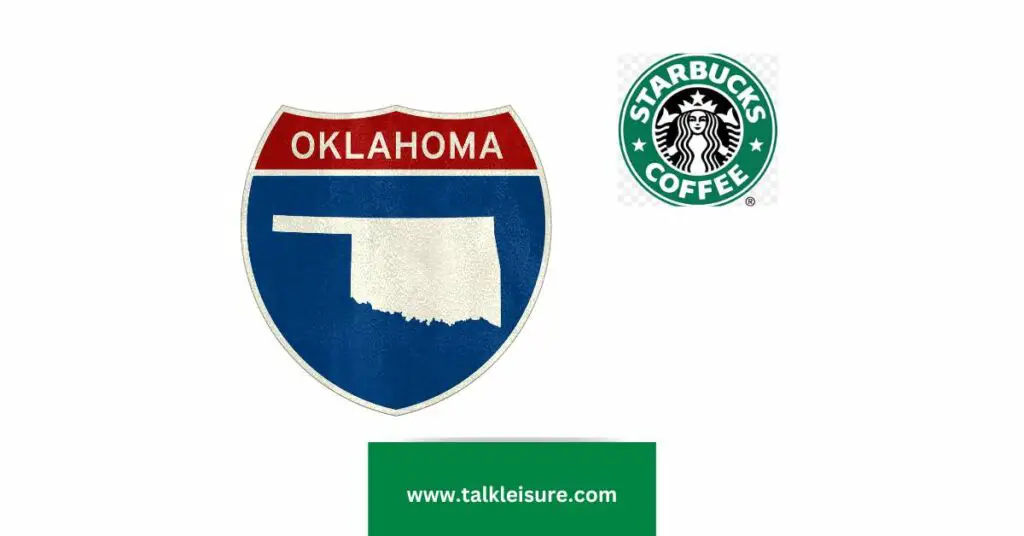For many people, a morning cup of coffee is an essential part of their daily routine. And while the barista is busy making your latte or cappuccino, have you ever wondered how many calories they are burning?
The job of a barista can be physically demanding, with long hours spent standing and moving around behind the counter.
In this blog post, we’ll take a closer look at the calorie-burning potential of being a barista and explore some of the factors that can influence the number of calories burned.
Whether you’re a coffee lover curious about the behind-the-scenes of your favorite café or a barista looking to better understand the physical demands of your job, read on to find out more.
Understanding the Physical Demands of Being a Barista: Essential Tasks and Requirements

As anyone who’s worked in a coffee shop knows, being a barista can be a physically demanding job.
There are a number of different tasks involved in making coffee, from grinding and tamping espresso shots to steaming milk and pouring latte art.
All of these tasks require a certain level of physical effort, which can add up over the course of a long shift.
One of the primary physical demands of being a barista is standing for long periods of time.
In most coffee shops, baristas spend the majority of their shift on their feet, moving back and forth between the espresso machine, the milk steamer, and the service counter.
This constant movement can be tiring, and it puts a lot of strain on the feet, legs, and lower back.
In addition to standing, baristas also need to be able to move quickly and efficiently.
During busy periods, there may be a constant stream of orders coming in, and baristas need to be able to keep up with the pace while maintaining accuracy and consistency.
This can require a significant amount of physical exertion, particularly during peak times.
Another physical demand of being a barista is the need to maintain good posture and body mechanics.
Because baristas are often hunched over the espresso machine or the service counter, they can be at risk of developing back, neck, and shoulder pain.
Proper posture and body mechanics can help reduce this risk, but it can be difficult to maintain good form over the course of a long shift.
Overall, being a barista requires a certain level of physical fitness and stamina.
While it may not be the most strenuous job out there, it does require a certain amount of physical effort and endurance.
By understanding the physical demands of the job, baristas can take steps to protect their health and well-being, and coffee lovers can appreciate the hard work that goes into making their favorite drink.
The Impact of Standing and Moving on Calorie Burn Per Hour

As I mentioned earlier, one of the primary physical demands of being a barista is standing for long periods of time.
Standing burns more calories than sitting, as it requires the muscles to work harder to maintain posture and balance.
In fact, standing for just one hour can burn up to 50 more calories than sitting for the same amount of time.
But standing alone isn’t enough to burn a significant number of calories.
To really boost calorie burn, baristas need to be moving around as well. Walking, bending, and reaching all require additional effort from the muscles, which increases energy expenditure.
The exact number of calories burned by a barista will depend on a number of factors, including their body weight, the intensity of their movements, and the duration of their shift.
However, estimates suggest that a barista can burn anywhere from 150 to 500 calories per hour, depending on the level of activity involved.
Of course, not all barista tasks are created equal when it comes to calorie burn.
Tasks that require more movement and physical effort, such as steaming milk or carrying heavy bags of coffee beans, will burn more calories than tasks that are relatively sedentary, such as taking orders or wiping down counters.
Overall, the impact of standing and moving on calorie burn is significant for baristas.
By staying active and engaged throughout their shift, baristas can burn a significant number of calories and improve their overall health and well-being.
And for coffee lovers, this knowledge can provide an extra appreciation for the hard work that goes into making their daily caffeine fix.
How Busy Periods and Slow Times Affect Calorie Burn: Understanding How Many Calories Does a Barista Burns

As I said before, a barista’s calorie expenditure will vary depending on a variety of variables, including the level of exercise.
The pace of the workday is among the main variables that can affect calorie burn.
Baristas may move fast and continuously during busy times, which can greatly increase calorie burn.
However, baristas may remain still for longer periods of time when business is slow, which can lower calorie burn.
During peak times, baristas may be rushing around the coffee shop, taking orders, preparing drinks, and cleaning up as they go.
This level of activity requires a significant amount of physical effort and can burn a lot of calories.
In fact, studies have shown that people who work in fast-paced environments burn more calories than those who work in slower-paced environments.
During slow times, however, baristas may spend more time standing in one place, waiting for customers to arrive.
While standing burns more calories than sitting, it doesn’t burn as many calories as movement.
During these periods, baristas may need to find other ways to stay active, such as doing stretches or taking short walks around the shop.
The Role of Equipment and Tools in Calorie Burn

The equipment and tools that baristas use on a daily basis can also play a role in calorie burn.
Some tasks, such as grinding coffee beans, tamping espresso shots, and steaming milk, require a significant amount of physical effort and can burn a lot of calories.
Other tasks, such as taking orders and processing payments, require less physical effort and may not burn as many calories.
One of the most physically demanding tasks for baristas is steaming milk.
This requires a lot of upper-body strength and can be very tiring over the course of a long shift.
In fact, studies have shown that steaming milk for just 30 minutes can burn up to 100 calories.
Tamping espresso shots is another task that requires a significant amount of physical effort.
The tamper is a heavy tool that must be pressed firmly onto the espresso grounds to create a consistent puck.
This requires a lot of upper-body strength and can burn a significant number of calories over the course of a shift.
Other tasks, such as pulling shots of espresso and pouring latte art, require more finesse than physical strength.
However, they still require a certain level of physical effort and can contribute to overall calorie burn.
Other Health Benefits of Working as a Barista

- Improved cardiovascular health: The physical demands of being a barista, such as standing and moving for extended periods, can improve cardiovascular health by increasing blood flow, lowering blood pressure, and reducing the risk of heart disease.
- Increased strength and flexibility: The physical tasks involved in being a barista, such as steaming milk and tamping espresso, can increase upper body strength and improve overall flexibility.
- Better balance and coordination: The need for precision and accuracy when making espresso drinks and latte art can improve hand-eye coordination and balance.
- Increased social interaction: Working as a barista provides an opportunity to interact with a variety of people, which can improve social skills, boost self-confidence, and reduce feelings of loneliness and isolation.
- Reduced stress levels: The fast-paced nature of the job and the need to multitask can be stressful, but for some baristas, this can be a positive challenge that keeps their minds engaged and reduces stress levels.
- Improved mental health: For some, the routine and structure of a barista job can provide a sense of purpose and fulfillment, which can improve mental health and overall well-being.
Conclusion

In conclusion, working as a barista can provide numerous physical and mental health benefits.
Beyond burning calories and improving cardiovascular health, the physical demands of the job can improve strength, flexibility, balance, and coordination.
Additionally, the social interaction and sense of purpose that comes with the job can improve mental health and overall well-being.
However, it’s important for baristas to balance these physical demands with self-care and rest.
Proper body mechanics, taking breaks, getting enough sleep, eating a balanced diet, and seeking support for mental health are all crucial aspects of staying healthy and preventing burnout.
By prioritizing both physical and mental health, baristas can enjoy a rewarding career while staying healthy and fulfilled.
So, whether you’re a seasoned barista or just starting out in the field, remember to take care of yourself and listen to your body.
By doing so, you can enjoy all the benefits of the job while maintaining your health and well-being for the long term.
FAQS
Q: How many calories does a barista burn during a typical shift?
A: Baristas can burn between 200 and 400 calories per hour, depending on factors like weight, age, gender, and work intensity.
Q: Does the type of drink being made affect calorie burn?
A: Yes, drinks that require more physical effort, such as lattes that need to be frothed manually, can burn more calories than simpler drinks like drip coffee.
Q: Can baristas incorporate exercise into their workday to burn more calories?
A: Yes, baristas can do exercises like squats or stretches during slow periods and take brisk walks during breaks or after work to burn additional calories.
Q: Does being a barista at Starbucks require a lot of physical activity?
A: Yes, being a barista at Starbucks requires a lot of physical activity. Baristas are constantly moving, bending, lifting, and walking throughout their shift. This level of physical activity can contribute to a higher number of calories burned compared to jobs that involve less movement.
Q: Does working as a barista count as a workout?
A: Working as a barista can contribute to your daily physical activity and can be a form of a workout, but it may not necessarily replace a dedicated gym session. While it can help burn calories and provide some level of physical exertion, it is still recommended to engage in regular exercise outside of your job.
Q: Can I rely on calorie counting apps to accurately reflect the calories I burn as a barista?
A: Calorie counting apps can provide a general estimation of the calories burned during physical activity, but they may not be accurate for specific occupations like being a barista. The apps may not have data specifically for barista tasks and may not account for variations in individual metabolism or effort level.
Q: Can I consume extra calories because I work as a barista at Starbucks?
A: Working as a barista at Starbucks does burn calories, but it does not necessarily mean you can consume extra calories without considering your overall caloric needs and goals. It is important to maintain a balanced diet and listen to your body’s hunger and fullness cues.
Q: Can being a barista help me achieve my caloric maintenance or weight loss goals?
A: Being a barista can contribute to your calorie burn throughout the day, which can aid in achieving caloric maintenance or weight loss goals. However, it is important to consider other factors such as your overall diet, lifestyle, and exercise routine to support your goals effectively.
Q: Is there any scientific research on the number of calories burned by occupation, specifically for baristas?
A: While there may not be specific scientific research on the exact number of calories burned by baristas, there are studies on the physical activity levels of individuals in different occupations. These studies generally suggest that physically demanding jobs, such as being a barista, can contribute to a higher daily caloric expenditure compared to sedentary jobs.












